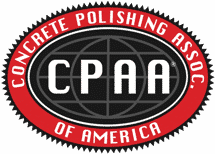When it comes to trim options for your home or business, one of the most common function pieces is the cove base. This type of trim can help to unify a space and complete a project with a clean and refined edge. There are many questions that you may have when it comes time to choose whether cove bases are right for your project. Here are the answers to some of the most common.
Commonly Asked Questions
When it comes time to select the trim for your room, it is vital to know what cove bases are and how they can benefit your space.
What Is Cove Base?
Cove bases are a type of trim that is typically used as a transitional piece between a floor and a wall. This type of trim is designed to sit flush against the wall, providing a smooth transition to the floor on a very tight radius. The small radius that cove bases contain prevents any debris and dirt from getting trapped in the transitional area.
What Is the Difference Between a Sanitary Cove Base and a Cove Base?
Although both options come with either a flat or a rounded top edge, the key difference is that a cove base will typically have a bullnose finish on the bottom.
When Are Cove Bases Required?
Coving is not typically required in any residential locations. However, it can provide endless protection in wet environments. In commercial settings, cove bases are typically required by law in order to meet safety and health standards. In most situations, sanitary cove bases are required in these locations.
Where Should Floor Coving Be Installed?
Cove base can be installed in nearly any location, but there are some locations where it is a more suitable option. These include:
- Wet industrial environments
- Commercial bathrooms
- Food service establishments
- Commercial break rooms
- Commercial beverage and food processing facilities
- Commercial kitchens
- Locker rooms
Providing this level of protection in these moist areas can reduce the risk of mold and mildew growth, which can be hazardous.
Are There Size Requirements?
Cove base must have a radius that is a minimum of ⅜-inch in size. The trim must also extend a minimum of 4 inches up the wall to provide adequate protection. Cove bases that are made of fireclay will have a ¾-inch radius and extend between 4 inches and 6 inches up the wall, making it an excellent choice to meet minimum requirements.
What Are the Types of Cove Bases?
There are several types of cove base to choose from. These include:
- Urethane cement
- Rubber
- Vinyl
- Ceramic
- Porcelain
In most cases, home and business owners will select either vinyl or rubber materials. The type of material that is used will generally be determined by the type of materials in your flooring and the budget that you have for the entire project.
Call Our Cove Base Experts Today
Our cove base experts at JDL Surface Innovations are available to meet with you to discuss your specific needs and find the option that will work best to meet them. Contact our office now at (239) 230-3312 to get started with a free estimate.
















